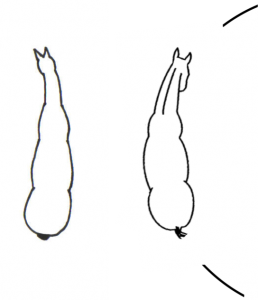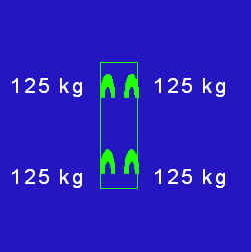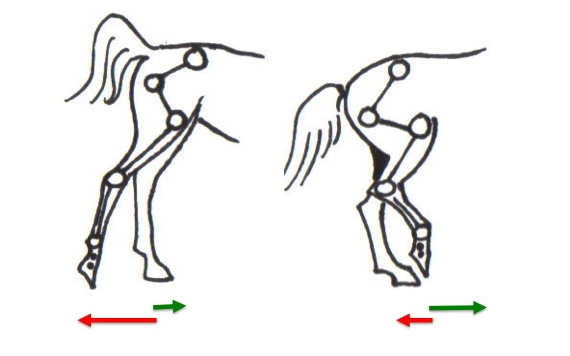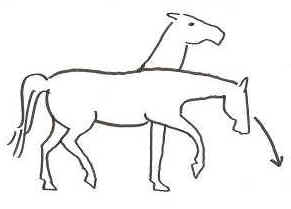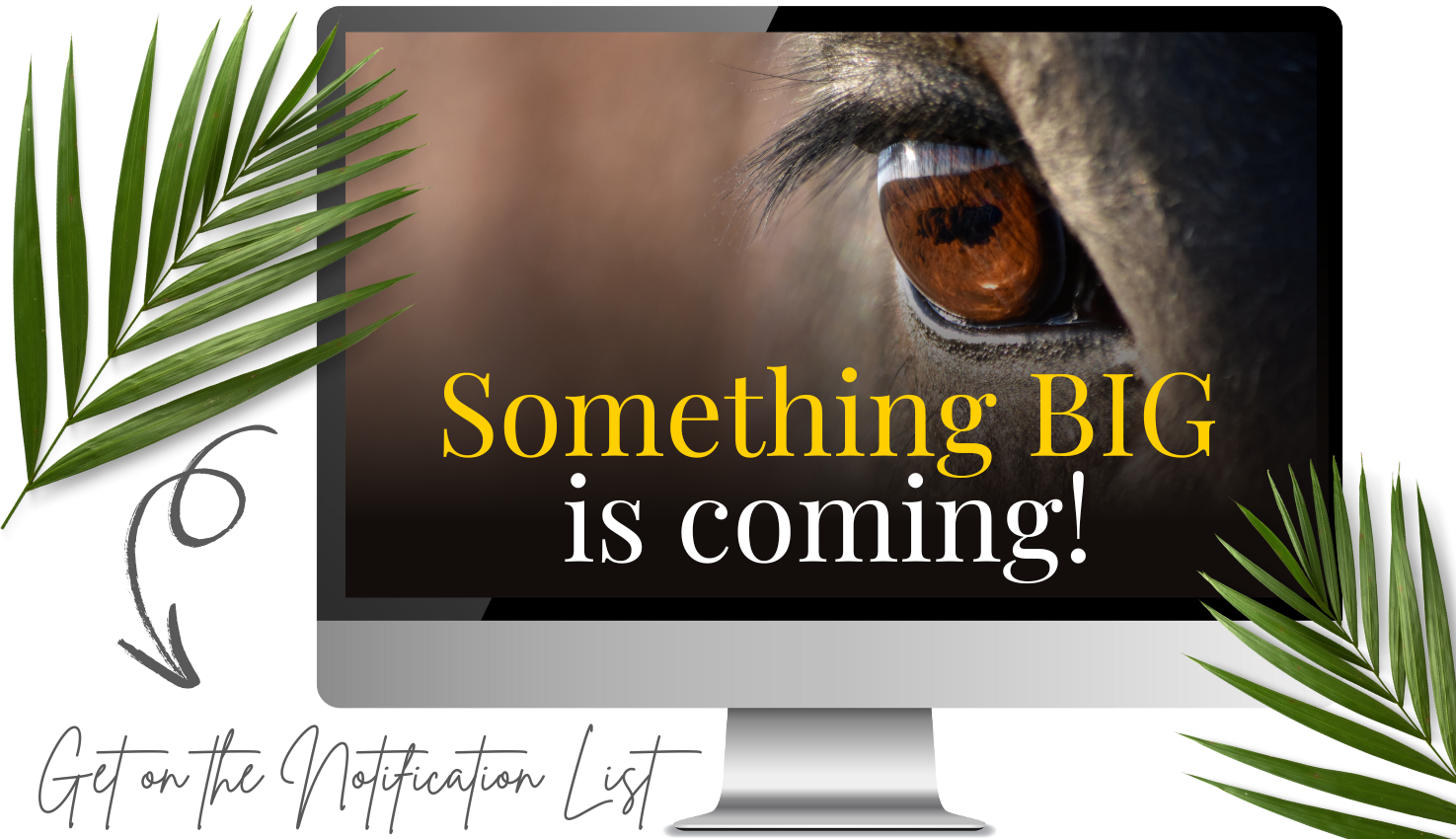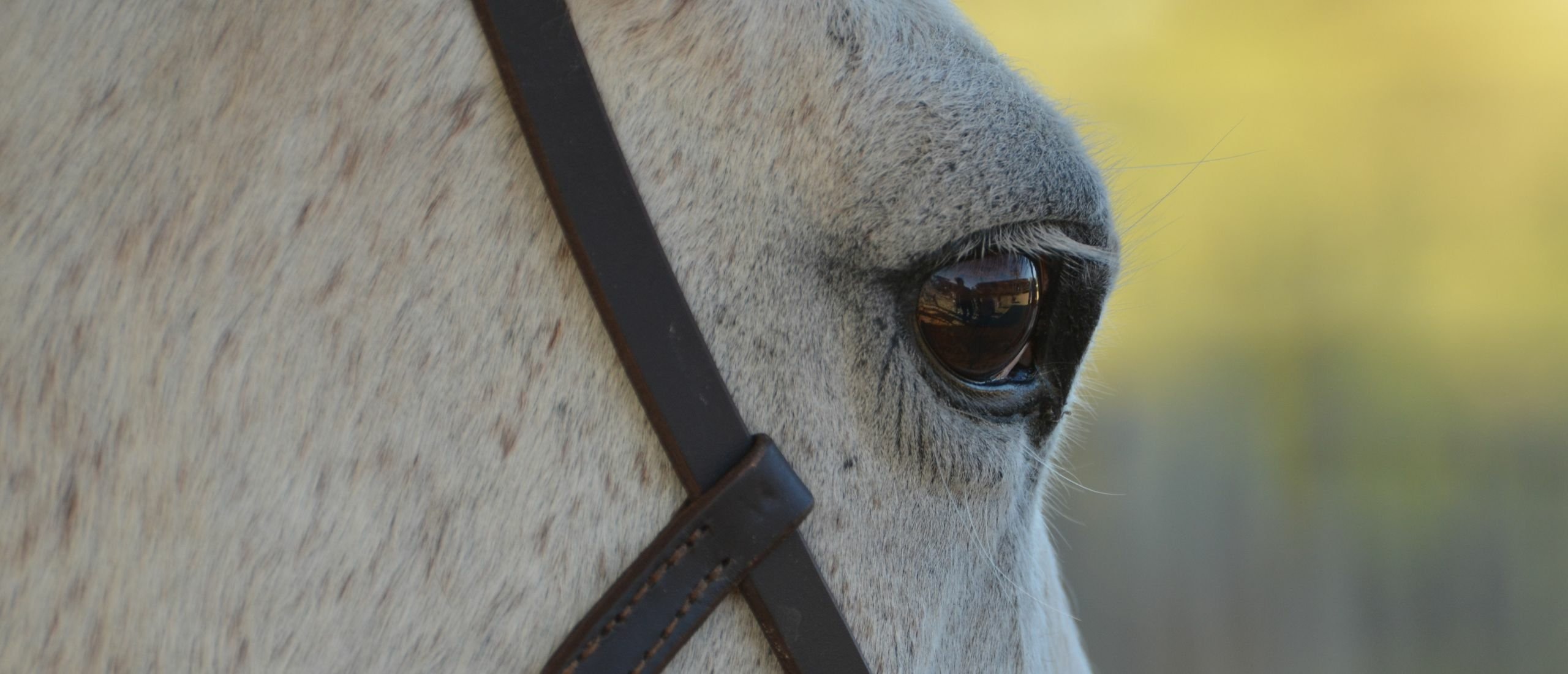
Dimensions of Straightness Training
Did you know that natural asymmetry is a muscle problem?
It can be simply solved by training the muscles.
This training is called Straightness Training.
The end result of Straightness Training is a straightened horse.
A straightened horse
A straightened horse
1. is symmetrically developed in body and limbs
2. is symmetrical in movement and can perform all exercises equally to the left and to the right
3. can be easilly collected
These elements together will bring your horse into a ‘riding balance’, which is actually the goal of Straightness Training.
Riding balance
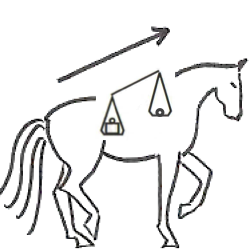
In riding balance, 3/5 of the body weight is carried by the hind legs.
In natural balance, 3/5 of the body weight is carried by the front legs.
To get from natural balance to riding balance we need a straightened horse.
Because only a straightened horse can carry te weigt on the hind legs.
And only then the front legs will move more freely.
Now to get to this ‘riding balance’ we need to address 8 different dimensions.
8 Dimensions of Straightness Training
A straightened horse is in balance in the following dimensions:
| 1. Lateral symmetry A straightened horse can bend to both sides flexibally and equally, and not only easily to the 'easy' side (picture on the left). |
| 2. Horizontal balance The body weight is equally divided over all four legs. For example, if a horse weighs 500 kg (1100 pounds), each leg then carries 125 kg (275 pounds). The center of mass is kept in the middle, keeping the horse in balance. |
| 3. Equal front legs A straightnened horses shows equal shoulder freedom in both front legs. |
| 4. Equal hind legs Both hind legs can push and carry equally. |
| 5. Correct alignment shoulders/hips During training, the horse has his hips and shoulders in alignment, and we can easily place the shoulders correctly in front of the hindquarter. |
| 6. Diagonal balance Straightness training prevents the horse from leaning in on the inside shoulder or out over the outside shoulder. In other words, the horse is in diagonal balance, because the center of mass doesn't drift to one of the shoulders and stays under the rider. |
| 7. Vertical balance A straightnened horse is vertically in balance. |
| 8. Correct topline A straightnened horse uses the back and abdominal muscles in a healthy way. The back muscles can relax at any time and the horse can easily move with the head and neck in a forward-down position. |
Due to these dimensions of Straightness Training, your horse gets into physical balance.

